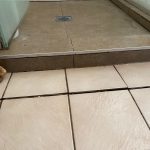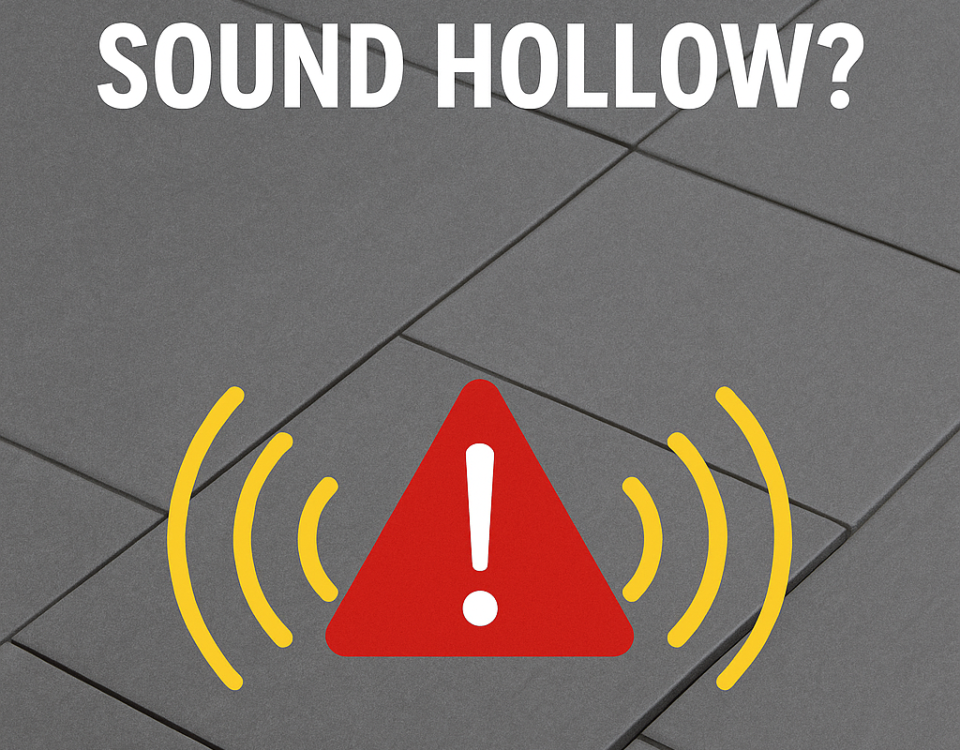
Why Does Grout Crack? Common Causes and What to Do About It
July 31, 2025
Loose Shower Tiles: It Is Worse Than You Think
August 8, 2025If you’re renovating your bathroom, kitchen, or floors, you might be wondering whether your old tiles need to come up before installing new ones. While tiling over existing tiles is sometimes possible, many jobs require full removal to ensure a strong, long-lasting result.
In this blog, we’ll walk you through what’s involved in removing old tiles, why it matters, and what to expect from the process.
Why Tile Removal Is Often Necessary
Old tiles might look solid on the surface, but what’s underneath can be hiding problems. Removing the original tiles allows us to:
-
Check for damaged or loose tiles
-
Inspect the condition of the adhesive and substrate
-
Repair any water damage or uneven surfaces
-
Install tile underlay or perform surface prep where needed
-
Ensure a proper bond for the new adhesive
Skipping this step can result in poor adhesion, hollow spots, cracks in the grout, or even tiles lifting after installation.
But Can’t You Just Pop Them Off and Reuse Them?
It’s a common question we get from clients. Sometimes people assume:
-
The tiles can be removed without breaking
-
The wall linings or trims will stay intact
-
Tile removal is quick and clean if done carefully
-
The old tiles can be reused or sold
In reality, tiles are bonded tightly to the substrate with tile adhesive. To remove them, they usually need to be smashed and chiselled off, which often damages the tile itself and anything around it. This includes trims, waterproofing, and sometimes the substrate underneath.
The only time tiles come off cleanly is when they were installed poorly to begin with — in those cases, they might pop off by hand. But in most professional installs, removal requires heavy-duty tools and a bit of controlled destruction.
For this reason, tile removal is not something we recommend attempting as a DIY job, especially in wet areas or around features like niches, vanities, and skirtings.
The Tile Removal Process
Here’s what’s typically involved when removing existing tiles before a new install:
1. Site Preparation
We protect surrounding surfaces, cover floors, and isolate the work area to minimise dust and disruption.
2. Breaking and Lifting the Tiles
We use chisels, breakers, or jackhammers to break the tiles and lift them. This stage is noisy and messy but necessary for a clean slate.
3. Removing Old Adhesive
Leftover adhesive is ground down or scraped off to create a level, clean surface ready for new tile.
4. Assessing the Substrate
We inspect the condition of the floor or wall underneath. Any damage, movement, or moisture issues are repaired, and tile underlay is installed if needed.
5. Cleaning and Priming
We clean the entire surface and prime it where required, ensuring a strong bond for the new tile installation.
Can You Tile Over Old Tiles?
In rare cases, yes, but only when the existing tiles are:
-
Fully bonded with no loose or hollow areas
-
Flat and level
-
Not interfering with floor heights or drainage
-
Clean and free of cracks or movement
Even then, it’s not always the best option. Tiling over tiles can affect waterproofing and create future adhesion issues. We only recommend it if we’re confident the result will be just as strong and compliant as a full removal job.
Thinking About a Renovation?
If you’re considering new tiles and wondering what’s involved in removing the old ones, Ray Tiling can help. We’ll assess your space, check the condition of your current tiles, and recommend the best approach, whether that means removal, repair, or tiling over an existing surface.
Contact us today for expert advice and a free quote.




